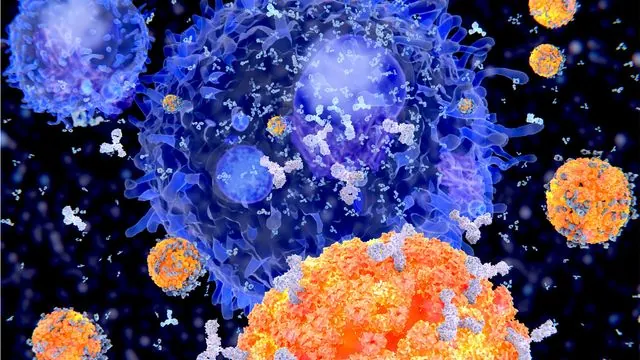
Revolutionary Discovery: Nerve Cells That Shield Against Flu's Ravaging Effects
2025-08-20
Author: Ming
Unveiling a Lifesaving Discovery
In a remarkable breakthrough, researchers from Harvard Medical School have identified a group of nerve cells that play a crucial role in protecting the body from the harmful immune responses triggered by the flu. This innovative study, published in *Science Immunology*, reveals that these cells could hold the key to mitigating severe influenza symptoms and potentially transforming treatment protocols for viral infections.
Meet the TRPV1 Vagal Nociceptors
Known as TRPV1 vagal nociceptors, these specialized nerve cells reside in the vagus nerve, which transmits vital signals between the brain and the body’s organs. Their conventional role involves detecting irritants and triggering protective reflexes, like coughing to clear airways of unwanted particles. However, recent findings show these cells are also critical defenders against excessive inflammation during flu infections.
A Silent Battle: Immune Response vs. Viral Threat
During a flu infection, the immune system spring into action, but an overstimulated response can lead to devastating tissue damage, making the situation worse. Researchers found that in mice, TRPV1 cells effectively regulate the immune response, preventing misfires that could turn lethal. This insight is particularly relevant in light of COVID-19, where exaggerated immune reactions have shown to cause serious organ damage.
Why Some Suffer More: The Nerve Factor
The study raises intriguing questions about flu severity among different populations. Why do some people, particularly the elderly, experience more severe symptoms? The findings suggest that the functionality of the vagus nerve might be a key factor, indicating why certain individuals can succumb to long-lasting immune damage while others recover swiftly.
Experiments Reveal the Protective Power
In controlled experiments where mice had TRPV1 neurons either silenced or disabled, a stark contrast emerged. Mice lacking these protective neurons showcased heightened lung inflammation and severe tissue damage, despite similar viral loads compared to their healthy counterparts. This underlines the nerve cells' protective role against a destructive immune storm.
Potential for Future Therapies
This groundbreaking research paves the way for new therapeutic approaches. Instead of solely targeting the flu virus, treatments could aim to replicate the protective functions of TRPV1 neurons to maintain a healthy immune balance. With recent FDA approvals for therapies involving vagus nerve stimulation, the potential for controlling inflammation in viral infections is promising.
A Call to Understand the Mystery
While the exact mechanisms behind TRPV1 neurons' control of inflammation are still unclear, the research isn't stopping here. Scientists are eager to delve deeper into how these nerve cells manipulate immune responses to tailor more effective treatments for viral infections.
Conclusion: A New Era of Immune Regulation
With this cutting-edge discovery, the landscape of flu treatment and immune regulation is evolving. Understanding the interplay between the neural and immune systems may revolutionize the way we approach viral infections, heralding a new era in medical science.

 Brasil (PT)
Brasil (PT)
 Canada (EN)
Canada (EN)
 Chile (ES)
Chile (ES)
 Česko (CS)
Česko (CS)
 대한민국 (KO)
대한민국 (KO)
 España (ES)
España (ES)
 France (FR)
France (FR)
 Hong Kong (EN)
Hong Kong (EN)
 Italia (IT)
Italia (IT)
 日本 (JA)
日本 (JA)
 Magyarország (HU)
Magyarország (HU)
 Norge (NO)
Norge (NO)
 Polska (PL)
Polska (PL)
 Schweiz (DE)
Schweiz (DE)
 Singapore (EN)
Singapore (EN)
 Sverige (SV)
Sverige (SV)
 Suomi (FI)
Suomi (FI)
 Türkiye (TR)
Türkiye (TR)
 الإمارات العربية المتحدة (AR)
الإمارات العربية المتحدة (AR)